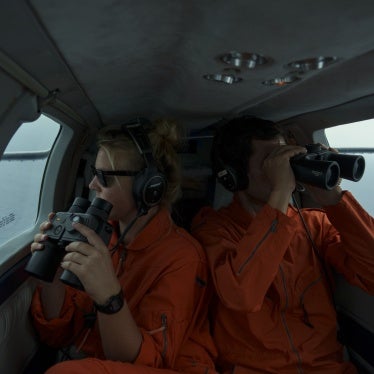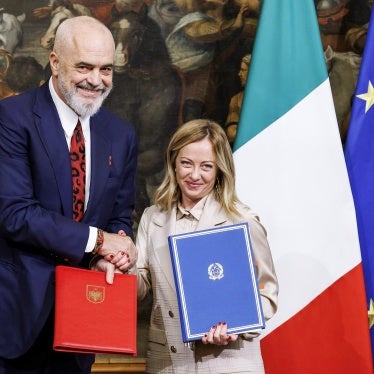Human Wrongs Watch
By Judith Sunderland, Associate Director, Europe and Central Asia Division | Human Rights Watch*
.
Italian Prime Minister Giorgia Meloni’s June 5 visit to Albania’s Shëngjin port underscores the folly of Italy’s scheme to send migrants and asylum seekers, intercepted in the Mediterranean Sea, to Albania.
Amid spiraling costs, delays, and serious concerns about people’s rights, the plan is revealing itself to be an example of how not to manage migration.
The scheme, agreed upon last November, commits Italy to setting up a processing center at the Shëngjin port, plus a reception center for asylum seekers with 880 places, as well as a detention center with 144 places. The reception and detention centers will be in Gjadër municipality.
Italy says it will send only adult men from countries it designates as “safe” to Albania to undergo an accelerated asylum procedure, followed by quick deportation for those denied protection.
But some countries so designated are not “safe” for everyone: there are documented cases of torture and other serious human rights violations in Egypt, Tunisia, Algeria, and Cameroon, for example.
How Italy will guarantee a fair asylum procedure and judicial review of detention in another state remains a mystery.
Meloni now says the centers, originally slated to become operational in May, will be ready by August. Construction costs have increased by more than 25 million euros, while the overall budget for the scheme’s operation over the next five years, according to the government, is €670 million (others say it will cost up to €850 million).
Italy’s government recently opened a bid for private contractors that shows how they plan to implement the deal. It wants a private ship with room for 300 people (200 migrants and 100 staff) to receive people directly from Italian state vessels at sea, south of the Italian island Lampedusa. They will then be transferred to Albania.
The operating budget for three months, starting in mid-September, is 13.5 million euros. It remains unclear how, where, and by whom assessments will be made to determine who among those rescued or intercepted should be sent to Albania.
Far from illustrating “a model to follow,” the visit showcased once more that Meloni’s government doesn’t have a sensible or humane approach to migration.
The Italy-Albania deal is costly, puts peoples’ rights at risk, and will likely do little to deter people from taking boats across the Mediterranean. It’s a bad idea that keeps getting worse.
Discover more from HUMAN WRONGS WATCH
Subscribe to get the latest posts sent to your email.



Leave a comment